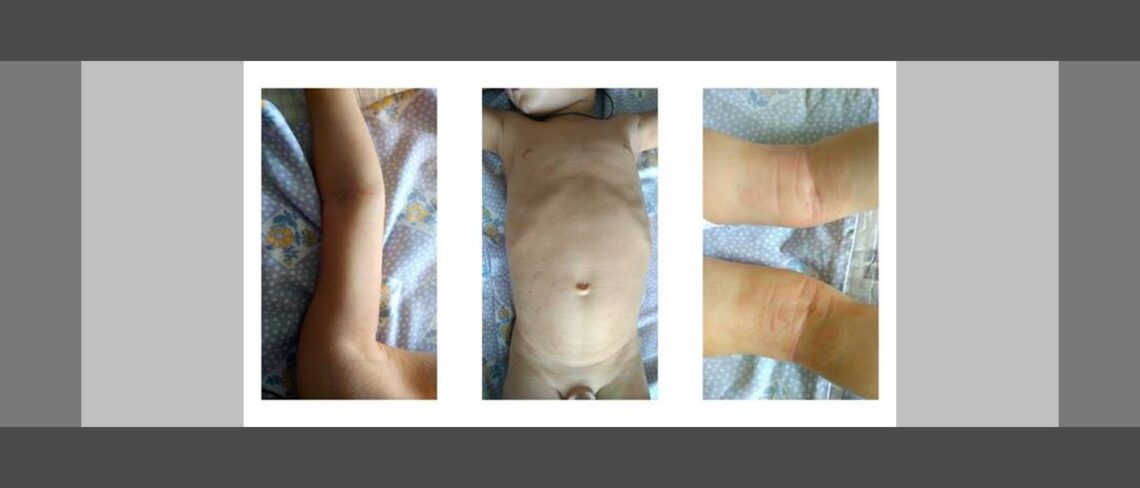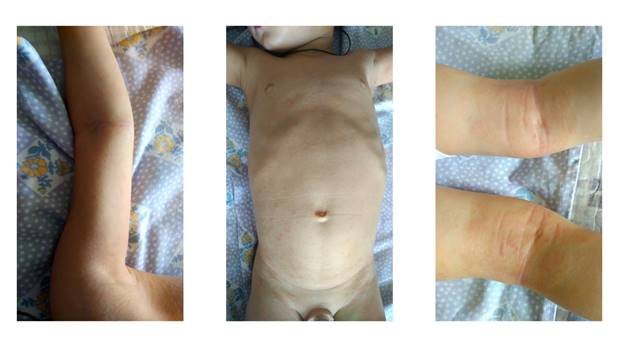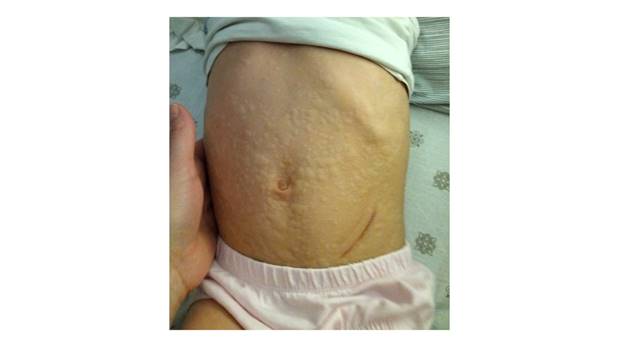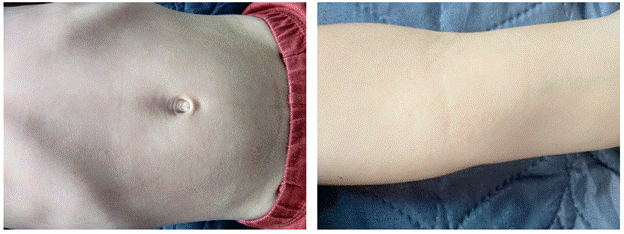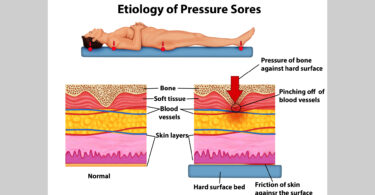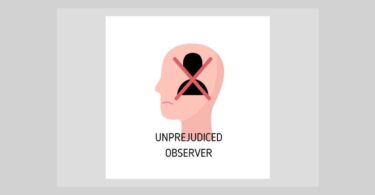Abstract:
Atopic dermatitis (AD) is a common chronic inflammatory skin condition characterized by pruritic, erythematous, and eczematous lesions that can occur on any part of the body. Despite the availability of various treatment options, managing atopic dermatitis can be challenging due to its chronic-relapsing nature and the potential for side effects with long-term use of medications.
There is a growing interest in alternative therapies such as classical homeopathy, which may offer a safe and effective treatment option for patients with atopic dermatitis. This case study focuses on a 3-year-old child with atopic dermatitis who was treated with classical homeopathy.
The treatment not only led to skin clearance but also improved the child’s overall quality of life. While more research is needed to establish the efficacy of homeopathy in treating atopic dermatitis, this case report highlights the potential benefits of this alternative therapy in managing this challenging condition.
Keywords: Atopic dermatitis, atopic march, hay fever, homeopathy, case report
Background:
Atopic dermatitis, also known as eczema, is a chronic inflammatory skin condition affecting millions of people worldwide. Atopic dermatitis is a common condition that affects approximately 10-20% of children and 1-3% of adults worldwide.1 It is more common in developed countries and in urban areas.1
The exact cause of atopic dermatitis is not fully understood, but it is believed to be a combination of genetic, environmental, and immunological factors.1,2 People with a family history of atopic dermatitis or other allergic diseases such as asthma and hay fever are at a higher risk of developing the condition.2,3
The pathogenesis of atopic dermatitis involves a complex interplay between the immune system, skin barrier function, and environmental factors.4 The skin barrier in people with atopic dermatitis is compromised making them susceptible to irritants and allergens.
The innate immune response in AD is characterized by an abnormal activation of skin-resident immune cells, such as mast cells, dendritic cells, and macrophages.2,4 Th2 cells release cytokines such as interleukin-4 (IL-4), interleukin-5 (IL-5), and interleukin-13 (IL-13), which drive allergic inflammation and contribute to the hallmark features of AD, including IgE production, eosinophil recruitment, and IgE-mediated hypersensitivity.5,3 This results in an immune response that leads to inflammation, itching, and skin damage.
The diagnosis of atopic dermatitis (AD) is based on clinical evaluation and assessment of symptoms using the Hanifin and Rajka criteria.6 The treatment of atopic dermatitis involves a combination of approaches including skin care, topical medications, and systemic therapies. Skin care involves avoiding irritants, maintaining skin hydration, and using emollients and moisturizers.
Topical medications such as corticosteroids, calcineurin inhibitors, and phosphodiesterase inhibitors can help reduce inflammation and itching.2 Systemic therapies such as oral corticosteroids, immunosuppressant, and biologic agents may be used in severe cases.
While these drugs have shown significant efficacy in many patients, they cause massive immune suppression leading to other systemic complications.4 Therefore, further research is required to comprehend the limitations of such therapies, and alternative therapies such as classical homeopathy may be beneficial in such cases. Classical homeopathy has been demonstrated to be effective in the treatment of AD and other skin conditions in the past.7, 8, 9 This case report suggests an alternative for treatment of AD with classical homeopathy.
Case report:
A 3-year-old boy developed atopic dermatitis (AD) when he was six months old (since 2019), which had gradually subsided with fucorcin syrup. The boy started to develop hay fever at the age of 1.5 years which did not respond well to conventional therapy and the AD continued to progress its course.
The eruptions first appeared over the bend of joints such as elbows and knees and spread all over body (Figure 1). At this juncture patient sought homeopathic help. First consultation took place on 28/06/2021.The symptoms available for prescriptions were:
- GENERALITIES – FOOD AND DRINKS – fat – agg (+++)
- GENERALITIES – FOOD AND DRINKS – butter – agg (++)
- GENERALITIES – SEASHORE, at the – amel (++)
- SKIN – ITCHING – scratch, must – until it bleeds (++)
- GENERALITIES – FOOD AND DRINKS – milk-agg (++)
- EXTREMITIES – ERUPTIONS – Joints-bends of – eczema (+)
- SKIN-ERUPTIONS – summer – amel (+)
- EXTREMEITIES – FELON (Onchyia, Paronchyia, Panaritium,etc) – nail, beginning in (+)
- STOOL – LIENTERIC (undigested) (+)
Figure 1: Atopic dermatitis at first consultation
Past medical history:
- Patient was given intravenous injections of glucose for 5 days because of low blood sugar levels. He was treated with antibiotics and dexamethasone for the phlebitis at the site of injection. He started to develop urticaria on the seventh day after birth and was found to have an allergic reaction to Magnesium.
- Skin eruptions reappeared at the age of six months after starting solid food; since then the child has been on strict diet.
- Patient was not vaccinated, and his milestones were normal.
- At the age of one year, patient developed Streptoderma eruptions over cheeks and whole body and was treated using fucorcin.
- At the age of 1.5 and 2.5 years, hay fever appeared with sneezing and nasal obstruction at night.
- Patient had no high fevers until the age of 3 years. He had a moderate grade fever (39oC) when he contracted COVID-19 at the age of 2 years. After Covid-19, patient became more allergic and developed skin eruptions from consuming red berries, bread, and various other food products. He also started to have wheezing occasionally.
Family history:
- Mother – Hay fever, Atopic dermatitis, PCOD.
- Father- chronic alcoholism.
- Grandparents – maternal grandmother and her sister suffered from depression.
Mental/emotional:
He is very obedient and shy. He cries very easily when mother scolds or resents him. He does not have any significant mental/emotional symptoms.
Personal history:
- Thirst: thirstlesss (++)
- Sleep: sleeps on abdomen (+).
- Perspiration: cervical region during sleep (++)
- Thermals: warm (++)
Diagnosis: Atopic dermatitis (ICD-10:L20.9)11,Hay fever (ICD-10:J30.1)12
Case analysis and prescription:
After a thorough investigation, it was obvious that patient had no mental or emotional symptoms. He was born with a tendency to develop allergies on skin. When the eczema was not treated properly, the allergic tendency affected the respiratory system (hay fever). The development of COVID-19 deteriorated the health even more and the boy become more prone to allergies from various food products. The study of the characteristic symptoms of the eczema and physical general symptoms gave rise to a specific totality of symptoms (Figure 2).
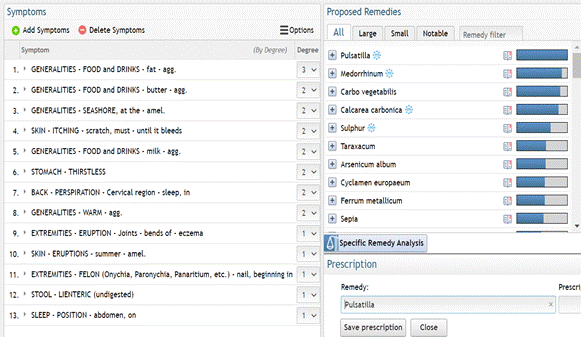
Figure 2: Reportorial result on 28/06/2021 (Vithoulkas compass)
Prescription: A dose of Pulsatilla nigricans 200CH was prescribed on 28/06/2021.
Follow up:
Table 1 – Follow up of the case.
| DATE | SYMPTOMS | ANALYSIS | PRESCRIPTION |
| 28/08/2021 | Patient developed hay fever in August: constant sneezing and nose obstruction better in warm room | Key notes of acute remedy are seen | Dulcamara 30CH one dose |
| 01/10/2021-11/11/2021 | Patient developed 2-3 episodes of low-grade fever with coryza.
Generally better |
The intensity of acute diseases was very mild compared to earlier. We must wait in such cases. | Nil |
| 12/11/2021 | Patient developed a fever of 38.8oC with dry cough and increased thirst. | The acute disease had clear symptoms and was treated. | Bryonia alba 30CH one dose |
| 23/11/2021 | No changes in the skin eruptions. Patient still developed eruptions from certain food products.
Patient was less shy compared to earlier. Stools were normal now. Patient started to develop frequent acute diseases with high fever and cough. |
Although there is no improvement in the skin symptoms, generally improvement has started. The remedy is acting, and we must wait. | Nil |
| 21/12/2021 | Patient developed a fever of 39oC at
5 AM with dry cough, wheezing breezing, thirst and nasal obstruction. |
The acute disease had clear symptoms and was treated. | Natrum sulphuricum 30CH one dose |
| 30/12/2021- 01/02/2022 | Patient developed acute diseases once in 2-3 weeks with no clear symptomatology. | The intensity of acute diseases was very mild compared to earlier. We must wait in such cases. | Nil |
| 04/02/2022 | Patient developed dry cough with dyspnoea. The asthma was very severe without fever and the respiratory rate was almost 55/minute. Patient was very anxious and restless, could not lie down. | The acute disease had clear symptoms and was treated. | Arsenicum album 30CH one dose |
| 29/03/2022 | Patient developed multiple vesicles on the cheeks with a tendency to form pustules with itching, worse at night and from washing (Figure 3)
Patient had similar complaints during 1 year of age. |
Old complaint has reappeared, with new keynotes. The case shows good prognosis. | Sulphur 30CH one dose |
| 02/04/2022 | After 4 days of the remedy, patient developed urticaria at 2AM on whole body, became very anxious (Figure 4) | Old complaint has appeared in the reverse order of appearance.
The acute disease had clear symptoms pointing towards a remedy. The depth of pathology has become simpler from atopic dermatitis to urticaria. |
Arsenicum album 200CH one dose |
| 06/07/2022 | Within 2 hours of the remedy, the urticaria improved first on the arms and then the legs.
The symptoms of atopic dermatitis are completely better. Patient is able to eat all the food products which earlier caused allergy. His energy and appetite is good. |
Patient is doing better both pathologically and generally. We must wait and watch. | Nil |
| 10/05/2023 | Patient had a sudden fever of 39.50C with hot head and cold feet. | The acute disease had clear symptoms and was treated. Patient developed a high fever after consistent treatment for 1 year. | Belladonna 200CH one dose |
| 01/07/2023 | From September 2022 to January 2023, there were no acute diseases.
Atopic dermatitis is completely better without any signs of relapse. Patient is generally doing well. (Fig. 5) |
There is no relapse of pathology with overall improvement. We must wait until any new symptoms appear. | Nil |
Figure 3: Reappearance of streptoderma on cheeks with treatment (29/03/2022)
Figure 4: Development of urticaria during treatment (02/04/2022)
Figure 5 Latest follow up pictures showing no relapse of the skin eruptions
Discussion:
Atopic dermatitis is a chronic inflammatory condition and can have a significant impact on the individual’s quality of life. It is often the first step in the atopic march, and these people are more likely to develop other allergic conditions, such as asthma, hay fever, and food allergies, as they age.3
The progression of these conditions is thought to be due to a shared genetic predisposition and immune dysregulation that predisposes individuals to develop multiple allergic diseases.2 AD is a complex and heterogeneous disease that can present with various clinical phenotypes.
The disease affects individuals differently, and the severity and symptoms can vary widely from person to person.13 Therefore, a tailored treatment approach is necessary to address the specific needs of each individual. While conventional medicine focuses on reducing the inflammation and skin clearance, classical homeopathy explores the reaction of an individual’s immune system to the genetic and epigenetic triggers thereby addressing the allergic tendency which is crucial for successful management of the condition.14 The study of these peculiar symptoms guides the homeopath to choose a suitable remedy.
The theory of levels of health, developed by Professor George Vithoulkas, provides a framework for evaluating the patient’s overall health and the severity of the disease condition, which can guide the homeopath to manage the acute and chronic diseases during the course of treatment effectively.15
The above case belonged to group C-Level 7 at the beginning of treatment with the development of chronic disease. With consistent treatment, patient started developing frequent acute diseases and noteworthy fevers (group B-Level 6) which were managed according to the classical homeopathic principles.
After a year of treatment, the frequency and severity of acute diseases started reducing and the patient was able to achieve full skin clearance along with overall improvement of health.8 It is also very interesting to follow that symptoms disappeared in the reverse order of appearance providing a good prognosis for the case. Patient developed an episode of streptoderma and urticaria during the course of treatment following which the AD drastically improved.16
The Modified Naranjo Criteria for Homeopathy (MONARCH) causality assessment provided a score of 11/13, indicating a strong causal relationship between the treatment and the observed outcome (Table 2).17 This case report highlights the importance of addressing the underlying cause of the disease which may not only help to achieve skin clearance in atopic dermatitis but also enhance overall quality of life. Therefore, it serves as a basis for further investigation into the advantages of classical homeopathy for managing AD.
Table 2: Modified Naranjo Criteria for Homeopathy (MONARCH) – for causality assessment
| Criteria | Y | N | Not sure/NA | Score in case |
| 1. Was there an improvement in the main symptom or condition for which the homeopathic medicine was prescribed? | 2 | -1 | 0 | 2 |
| 2. Did the clinical improvement occur within a plausible time frame relative to the drug intake? | 1 | -2 | 0 | 1 |
| 3. Was there an initial aggravation of symptoms? | 1 | 0 | 0 | 0 |
| 4. Did the effect encompass more than the main symptom or condition, i.e., were other symptoms ultimately improved or changed? | 1 | 0 | 0 | 1 |
| 5. Did overall well-being improve? | 1 | 0 | 0 | 1 |
| 6 (A) Direction of cure: did some symptoms improve in the opposite order of the development of symptoms of the disease? | 1 | 0 | 0 | 1 |
| 6 (B) Direction of cure: did at least two of the following aspects apply to the order of improvement of symptoms: from organs of more importance to those of less importance, from deeper to more superficial aspects of the individual, from the top downwards | 1 | 0 | 0 | 1 |
| 7. Did “old symptoms” (defined as non-seasonal and non-cyclical symptoms that were previously thought to have resolved) reappear temporarily during the course of improvement? | 1 | 0 | 0 | 1 |
| 8. Are there alternate causes (other than the medicine) that with a high probability could have caused the improvement? (consider known course of disease, other forms of treatment, and other clinically relevant interventions) | -3 | 1 | 0 | 1 |
| 9. Was the health improvement confirmed by any objective evidence? (photos before and after treatment) | 2 | 0 | 0 | 2 |
| 10. Did repeat dosing, if conducted, create similar clinical improvement? | 1 | 0 | 0 | 0 |
| Total | 11 |
Conclusion:
This case demonstrates the beneficial effect of classical homeopathy in atopic dermatitis and conforms to the expected progress of the pathology in reverse order during treatment. More research is necessary to confirm this homeopathic rule in eczema and other conditions.
References:
- Nutten S. Atopic dermatitis: Global epidemiology and risk factors. Ann Nutr Metab. 2015;66:8-16. doi:10.1159/000370220
- de Lancy Horne DJ, Coombes EA. Eczema. Cambridge Handb Psychol Heal Med Second Ed. Published online August 8, 2022:693-696. doi:10.1017/CBO9780511543579.167
- Hill DA, Spergel JM. The atopic march: Critical evidence and clinical relevance. Ann allergy, asthma Immunol Off Publ Am Coll Allergy, Asthma, Immunol. 2018;120(2):131-137. doi:10.1016/j.anai.2017.10.037
- Brunner PM, Guttman-Yassky E, Leung DYM. The immunology of atopic dermatitis and its reversibility with broad-spectrum and targeted therapies. J Allergy Clin Immunol. 2017;139(4):S65-S76. doi:10.1016/J.JACI.2017.01.011
- Yang TLB, Kim BS. Pruritus in allergy and immunology. J Allergy Clin Immunol. 2019;144(2):353-360. doi:10.1016/J.JACI.2019.06.016
- Akan A, Dibek-Mısırlıoğlu E, Civelek E, Vezir E, Kocabaş CN. Diagnosis of atopic dermatitis in children: comparison of the Hanifin-Rajka and the United Kingdom Working Party criteria. Allergol Immunopathol (Madr). 2020;48(2):175-181. doi:10.1016/J.ALLER.2019.07.008
- Mahesh S, Mallappa M, Habchi O, et al. Appearance of Acute Inflammatory State Indicates Improvement in Atopic Dermatitis Cases Under Classical Homeopathic Treatment: A Case Series. Clin Med Insights Case Reports. 2021;14. doi:10.1177/1179547621994103/ASSET/IMAGES/LARGE/10.1177_1179547621994103-FIG9.JPEG
- Mahesh S, Mallappa M, Tsintzas D, Vithoulkas G. Homeopathic treatment of vitiligo: A report of fourteen cases. Am J Case Rep. 2017;18:1276-1283. doi:10.12659/AJCR.905340
- Mahesh S, Shah V, Mallappa M, Vithoulkas G. Psoriasis cases of same diagnosis but different phenotypes—Management through individualized homeopathic therapy. Clin Case Reports. 2019;7(8):1499-1507. doi:10.1002/ccr3.2197
- 2023 ICD-10-CM Diagnosis Code L20.9: Atopic dermatitis, unspecified. Accessed June 12, 2023. https://www.icd10data.com/ICD10CM/Codes/L00-L99/L20-L30/L20-/L20.9
- 2023 ICD-10-CM Diagnosis Code J30.1: Allergic rhinitis due to pollen. Accessed June 12, 2023. https://www.icd10data.com/ICD10CM/Codes/J00-J99/J30-J39/J30-/J30.1
- Cabanillas B, Brehler AC, Novak N. Atopic dermatitis phenotypes and the need for personalized medicine. Curr Opin Allergy Clin Immunol. 2017;17(4):309-315. doi:10.1097/ACI.0000000000000376
- Vithoulkas G and Tiller.w. The Science of Homeopathy. 7th Edition.; 2014.
- Vithoulkas G. Levels of Health.; 2017.
- Kent JT. Kent’S Lectures on Homoeopathic Philosophy. B.Jain publishers; 2002. https://www.naturopathicmedicineinstitute.org/wp-content/uploads/2016/09/Lectures-on-Homeopathic-Philosophy.pdf
- Lamba CD, Gupta VK, Van Haselen R, et al. Evaluation of the Modified Naranjo Criteria for Assessing Causal Attribution of Clinical Outcome to Homeopathic Intervention as Presented in Case Reports. Homeopathy. 2020;109(4):191-197. doi:10.1055/s-0040-1701251

